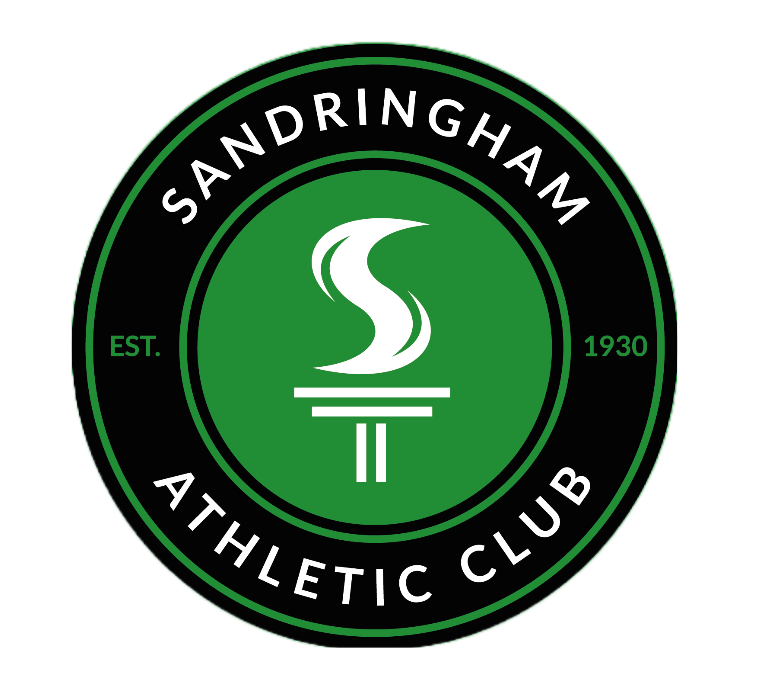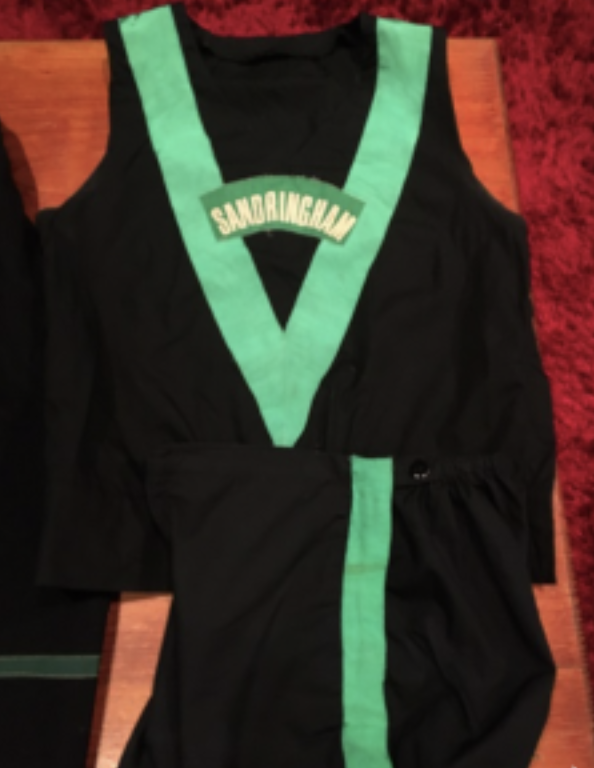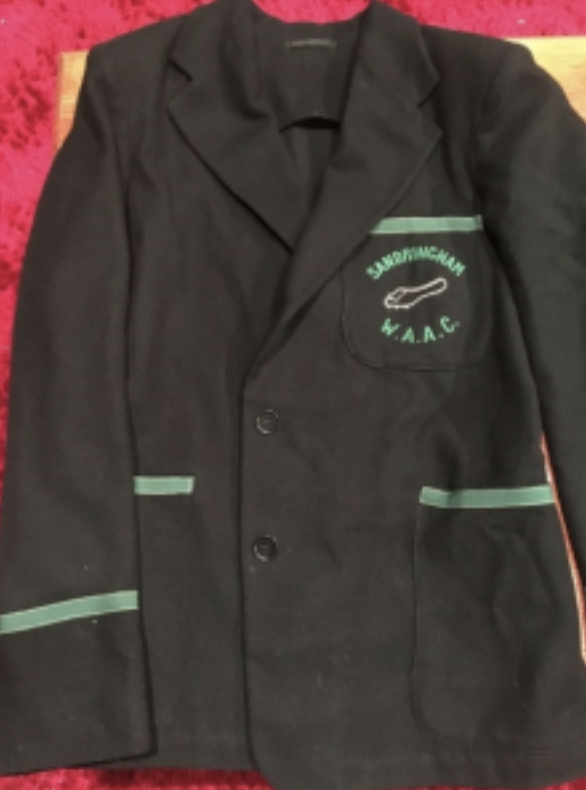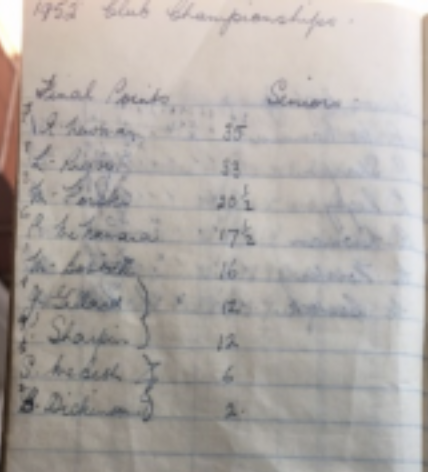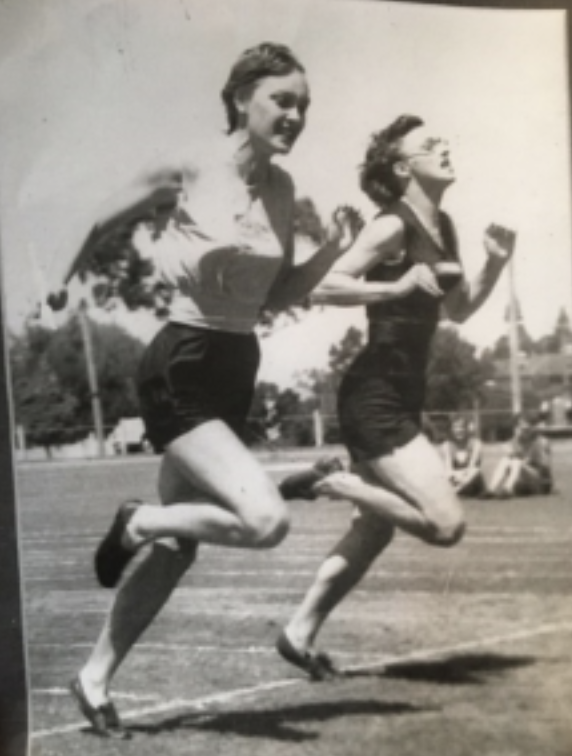
Club History
Where we began…
The Sandringham Amateur Athletic Club was formed at a meeting held on 8th April 1930. The first recorded event was an 880 yards handicap at the Beach Oval (now Sandringham Football Ground).
The competition moved to Tulip Street in October 1930, but Beach Oval was still the training ground. In 1941, the Club was promoted to “A” Grade. In 1951-1952, the Club won its first “A” Grade premiership and had its 1st Olympic representative in 1952 – Ken Doubleday in Hurdles. Ken also competed in 1956 Olympics. 1957-1958 saw another “A” Grade premiership, five Cross-Country pennants and its own ground at Glamis Ave., Hampton. This premiership team included two juniors; walker, John Morrison who still competed for the club up to 2017 and hurdler, Roy Boyd, who became the club’s head coach for many years. The club successfully tendered for the erection of the clubrooms through Mr Punch using voluntary labour and various sub-contractors. The club moved from the ground in Royal Ave to its new and present home at Glamis Ave., Hampton in May 1960. 1960-1961 saw the completion of the clubrooms and the track was officially opened in October 1962.
Alison Newman started the first Sandringham Woman’s Amateur Athletic Club. They were affiliated in 1952 with the V.W.A.A.A. (Victorian Woman’s Athletic Amateur Association). Alison was the Honorary Secretary for the club.
Alison commenced the club around late1950 early 1951 and their first AGM was held on July 5th, 1952. Fees were set at the time as 7/6 for seniors and 2/6 for juniors. The original club had around 6 members. Alison was a 100m and 200m sprinter and trained regularly with the Olympians who went to the 1952 Helsinki Olympics in Finland. Unfortunately, Alison missed out on qualifying but attended with her husband who was a hurdler and had a great time socialising with her friends she had trained with who competed there.
In 1964, Mick Ryan was a member of the Olympic Team in 400m Hurdles and can be still seen at the ground assisting athletes in this discipline. In September 1966, it was decided to start a Little Athletics centre at our ground, similar to the one at Geelong and this became the 1st metropolitan centre in Victoria. The SAAC members helped get it off the ground and it was handed off to parental control the next year.
In 1967-1968, the grass track was badly affected by the drought, The VWAAA hired the ground for their interclub season. In 1968-69, Sandringham Council gave the go-ahead for clubroom extensions, which included kiosk, kitchen, additional toilet facilities, first aid and committee rooms and additional storage room. Club members erected seating along the fence, with financial help from SWAAC. The Javelin run-up was laid, and the discus cage was provided.
In 1972, Malcolm Baird competed at the Olympics in 110m Hurdles. In 1972-1973 Sandringham became a venue for Men’s Interclub and at the end of the season, the new rubber bitumen track was laid. The track was resurfaced again in 1975 and Interclub was conducted there until 1981. In 1980, Sandringham won its first in “A” Grade Cross Country Championship and 1981 was once again a power to be reckoned with at Cross Country – our glory days in distance running. The end of the 1981/2 Track & Field season saw Sandringham relegated from “A” Grade. However, after a great effort in 1982/1983 season, Sandringham was once again promoted to “A” Grade.
Victorian Peninsula Road Relay Team, 1979 – Tim Adams, John Sheehan, Rob Zubin, Greg Adams, Norm McLennan, Doug Chugg (Manager), Ross Shilston, Trevor Scott.
A new era began in 1983 with the amalgamation of the Men’s & Women’s Clubs into one body. 1983/84 saw the men’s & women’s teams (excepting A Grade) competing together for the 1st time at Glenhuntly Venue. The Sandringham Council spent $9000 removing asbestos from the ceiling of the Clubrooms. This meant that the resurfacing of the track was deferred.
1987 saw the formation of the Bayside “A” Grade team, comprising athletes from Mentone & Sandringham as both clubs had been struggling to field competitive teams in “A” Grade. 1988 finally saw the overdue resurfacing of the track. It also saw the women’s U18 team win the Association Final – the 1st women’s Association win in over 20 years. Frankston joined the Bayside team and in both 1988/1989 and 1989/1990 the Bayside Team made the final 4. Sandringham had perhaps our best result ever at State Relay Championships.
In 1990, Sandringham, Mentone & Frankston combined to form the Bayside Women’s team. This team was 3rd in Association Final in 1990/1991. In 1992, Mentone withdrew from the Bayside teams and the reduced men’s combine had to contest a relegation final to remain in State League. Malvern joined the Men’s Bayside team in 1993. Unfortunately, the Women’s Bayside team were unable to retain their place in State League and were relegated at the end of the 1993/1994 season. Bayside Men suffered the same fate at the end of the 1994/1995 season. In 1995, the very big decision was taken to resurface the track with polyurethane surface and this was achieved with Council & State Government help in 1997. However, the Club had to contribute $30,000 towards this and were grateful for the many contributions received, especially from life and former members. The Club must pay all future maintenance and repairs to the track and so it has become a case of “users pay”.
In 1997, a new Women’s combine comprising Sandy, Mentone, Frankston, Ajax Maccabi & Glenhuntly Women was formed to contest the Promotion/Relegation match and won the right to compete in State League. In 1998, with Mentone back in the Combine, Bayside Men finally won their way back into State League. In 1999/2000 Bayside Men were the winners at State League. This was celebrated at the Club’s Dinner to mark its 70th year when pennants were presented to team members by some of the former outstanding athletes of the Club.
In 2000, Tamsyn Lewis competed in the Sydney Olympics in 800m. That year, we also had our first Paralympic representative in Don Elgin. Don came 4th in Pentathlon. In 2004, these two once again represented us in Athens – Tamsyn in 800m and 4 x 400 relay and Don winning bronze medals in the Pentathlon and 4 x 100m relay and silver in 4 x 400m relay.
In recent years, the Women’s Bayside Team has been very successful. They were second in 2001 and were the winning team in 2002, 2003, 2004 and 2005.
Club member Roy Boyd was awarded an Order of Australia Medal in 2006 for his services to athletics. Roy was associated with the Club for over 70 years and is a life Member of both Athletics Victoria [AV] the Australian Track and Field Coaches Association [ATFCA] and a Life Governor of Athletics Australia [AA]. He played a massive part of the clubs history and was a respected by everyone who met him, read more about Roy’s contribution here.
Over the years, a great many people have contributed to the success of the Club. However, for length of active service, one name stands out – Don Bell. He joined the Club as an athlete in 1937 and acted as an official for the Club and at numerous State, Australian and International competitions until, at least, 2002. He also did his stint on the Committee. He is a life member of the Club and of Athletics Victoria.
While the Club’s fortunes have waxed and waned over the years, one thing has remained constant and that is the support all have received from both past and present members and coaches. We are proud that athletes of all ages and abilities (or disabilities) have always been welcomed at the Club.
Below are pictures of the first woman’s uniform and blazer along with notes from the original notebook Alison kept and Winsome Cripps (L) and Alison Hanmer nee Newman (R) which are now displayed at the clubrooms. A huge thank you to Lee Alison’s daughter who donated this.
